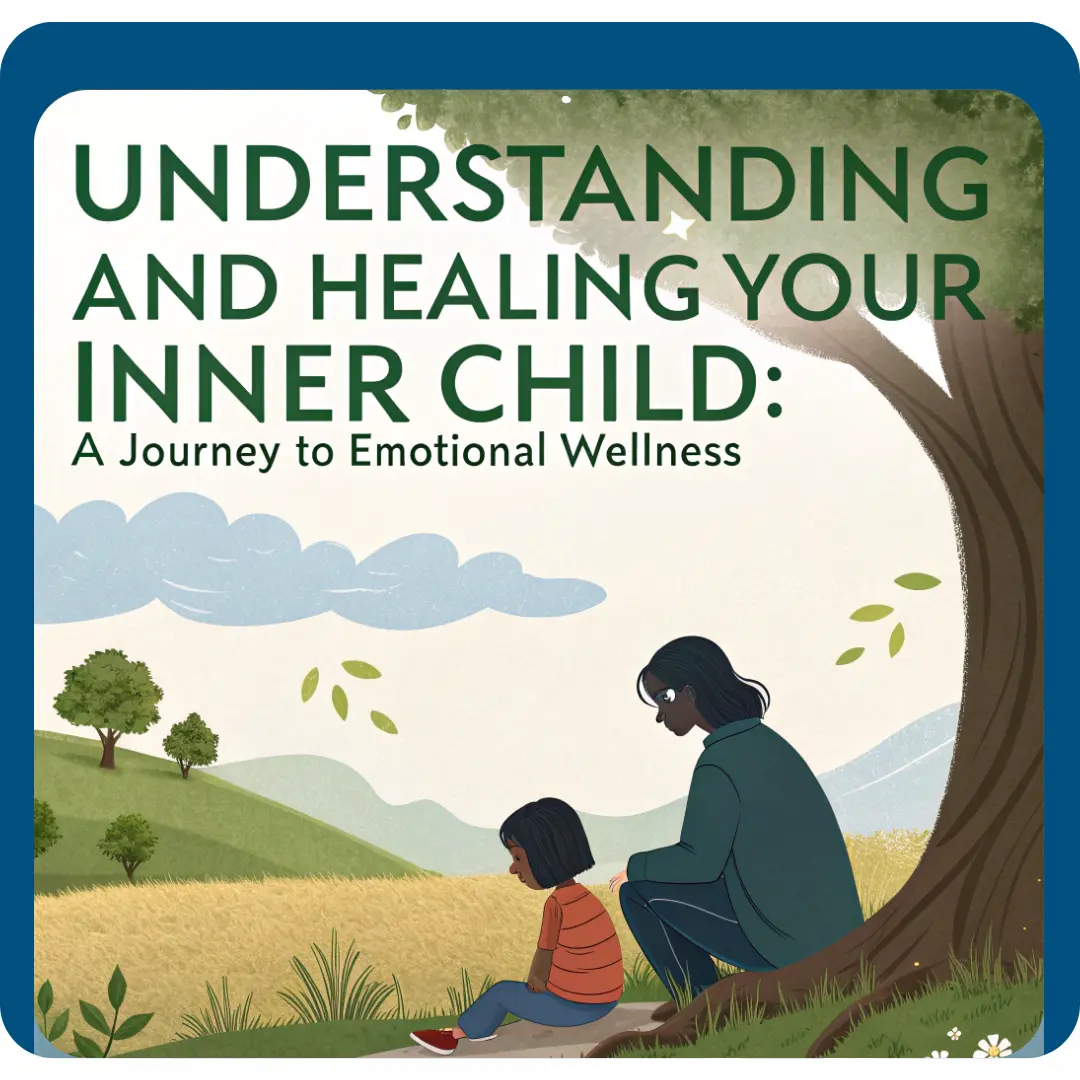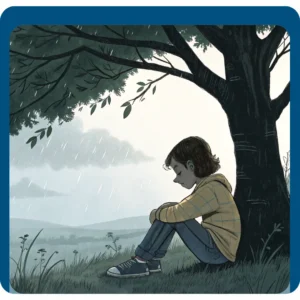Understanding and Healing Your Inner Child: A Journey to Emotional Wellness
Table of Contents
Healing your inner child is a journey that can bring emotional balance and peace to your life. Many of our adult struggles stem from unresolved childhood pain or unmet needs. By reconnecting with the child within, you can heal old wounds, let go of emotional blocks, and find a greater sense of well-being. This isn’t about dwelling on the past, but about creating a healthier and happier future. Ready to begin this journey of self-care and healing? Let’s explore how to nurture your inner child and improve your emotional health.
What Is An Inner Child?
The inner child represents the part of us that retains the feelings, thoughts, and experiences from the past. Just like the excerpt by Harvey Jackins highlights, many of us carry unresolved emotions from childhood into adulthood. These feelings can manifest as behaviours or reactions that seem out of place or excessive, such as unexpected rage or intense withdrawal or more.
All aspects of our lives are somewhat shaped by our Inner Child – be it relationships, finances, health or personality.
How the Inner Child Affects Us
The impact of the wounded inner child can be profound. A person finding himself over-reacting to a situation can be attributed to an unresolved childhood hurt or suppressed anger. Such unexplained or even illogical behaviours are a form of age regression, where an adult reverts to the emotional state of their younger self when dealing with stress.
Key areas affected by the Inner Child:
- Co-Dependence: A need for approval or validation from others that stems from childhood experiences.
- Offender behaviours: Acting out or aggressive behaviours that can be a result of unprocessed childhood anger.
- Narcissistic Disorders: A focus on oneself to compensate for a lack of self-worth from childhood.
- Trust Issues: Difficulty in forming and maintaining trusting relationships due to past betrayals or neglect.
- Acting Out/Acting In behaviours: Externalizing problems through outbursts or internalizing them through self-destructive behaviour.
- Magical Beliefs: Holding onto unrealistic expectations or fantasies developed in childhood.
- Intimacy Dysfunctions: Problems with forming close, meaningful relationships due to past wounds.
- Non-disciplined behaviours: Difficulty in maintaining self-control and discipline.
- Addictive/Compulsive behaviours: Using substances or repetitive actions to cope with unresolved issues.
- Thought Distortions: Misinterpreting situations based on past experiences.
- Emptiness: Feeling a sense of apathy or depression stemming from unresolved childhood trauma.
Healing the Inner Child
Healing the inner child involves a process of self-awareness, compassion, and targeted interventions. Here are steps to begin this healing journey:
- Connect with Early Memories: Access and revisit critical early memories that led to unresolved emotions and beliefs.
- Investigate Emotions and Somatic Responses: Relieve and process the emotions and physical sensations related with these early events to find out their impact on present actions.
- Reframe and Release: Identify and confront outdated ideas formed as a result of these events, as well as release emotions that no longer belong to you, to make room for better perspectives.
- Integrate and Transform: Apply new insights and healing to present life problems, leading to positive personal transformations and progress.
Inner Child Healing is a complex process and requires trained and professional interventions at times. One of the best known methods for a deep-rooted Inner Child Healing is the The Healing Room method using advanced regression therapy and family constellation therapy. To know more, visit our website (tretafoundation.org).
How Does Inner Child Therapy Work?
Inner child therapy works in a systematic manner through six stages of healing. It involves various techniques to address and heal past wounds. Here’s how it generally works:
- Exploring: What issue is connected to which unresolved Inner Child?
- Regression: The memory and the trigger of the incident
- Reliving: Going through the experience energetically and emotionally to complete it.
- Release: Releasing all the pent up emotions, expressions, hurt, imprints, and core beliefs formed during the incident.
- Energy Exchange: Releasing all the thoughts, feelings and emotions picked up from the people in the situation.
- Integration: Allowing this healed part of us to grow up and integrate into the adult.
The Healing Room Technique
Several techniques are used in inner child therapy to facilitate healing. The Healing Room Technique is one of the most powerful and effective one for not just healing the Inner Child but also for creating a personal sanctuary for yourself: Having a personal sanctuary offers numerous advantages for your mental, emotional, and physical well-being:
- Stress Relief and Relaxation: A personal sanctuary provides a peaceful retreat from daily pressures, allowing you to unwind and reduce stress levels effectively.
- Enhanced Emotional Resilience: This safe space helps you process emotions in a supportive environment, building resilience and improving your ability to cope with life’s challenges.
- Improved Focus and Clarity: Spending time in your sanctuary can clear your mind, enhance concentration, and foster better decision-making skills.
- Encourages Self-Reflection and Growth: It offers a dedicated space for self-reflection, helping you gain insights into your thoughts and behaviors, and guiding personal growth.
- Boosts Creativity and Problem-Solving: By providing a calm setting away from distractions, a sanctuary stimulates creative thinking and helps you approach problems with a fresh perspective.
- Supports Mental Health: Regularly retreating to your sanctuary can alleviate anxiety, reduce symptoms of depression, and promote overall mental well-being.
- Personal Empowerment: A sanctuary reinforces the idea that you control your environment, boosting confidence and empowering you to take charge of your emotional health.
Having a personal sanctuary using the Healing Room Technique is more than just having a physical space; it’s about creating an emotional refuge that supports your overall wellness and encourages a deeper connection with yourself.
Conclusion
Healing the inner child is a transformative journey that involves understanding, compassion, and practical techniques. By acknowledging and addressing the wounds of the past, we can create a more balanced and fulfilling life. Whether through therapy or self-help exercises, embracing and nurturing your inner child is a crucial step towards emotional well-being and personal growth.
If you’re ready to embark on this healing journey, consider reaching out to a therapist who specializes in inner child work. They can guide you through the process and provide the support you need to integrate and heal this essential part of yourself. Remember, the path to healing is a personal one, and every step you take brings you closer to emotional freedom and fulfillment.
—
Natasha Arora, Clinical Psychologist and Research Executive at Treta Foundation and Sonali Mittra, Director, Treta Foundation
FAQs
The inner child is the part of you carrying childhood feelings, needs, and wounds.
Healing helps with self-worth, relationship issues, emotional reactivity, and inner peace.
Signs include fear of abandonment, strong shame, perfectionism, difficulty trusting, or emotional flashbacks.
Acknowledge the pain, nurture yourself, express needs, use therapy or journaling, and allow safe vulnerability.
Yes – through self-help tools (journaling, meditation, creative expression), but therapist speeds up healing.
It varies. Some feel relief in weeks, others need months or more depending on depth of wounds.
Definitely. Healing inner child makes you more compassionate, trust more, and communicate better.
Even small regular work (once a week) helps. Some people do daily journaling or mindfulness.
Yes, it’s normal. When healing, past memories often come up so they can be processed and released.
Both. It draws from psychology (therapy, attachment, emotions) and spiritual practices (self-love, mindfulness, forgiveness).



